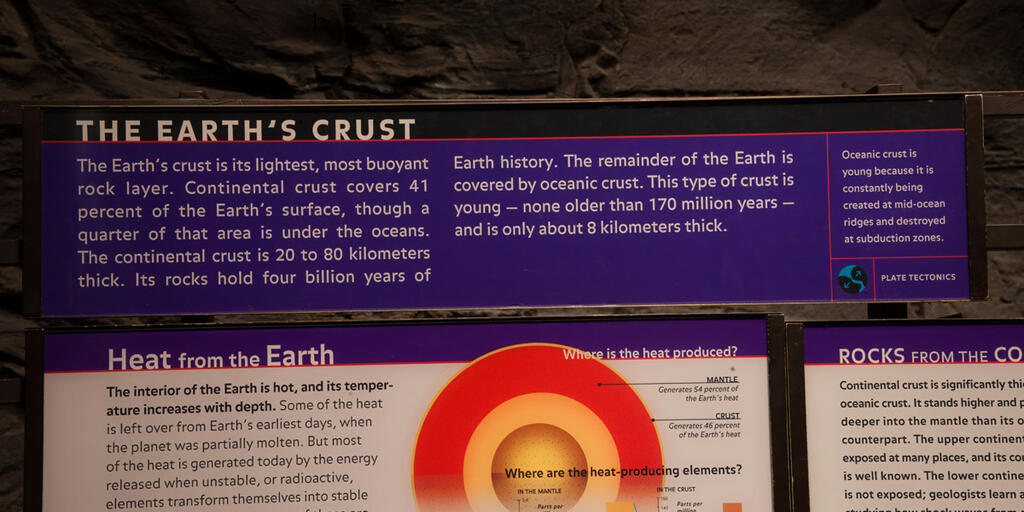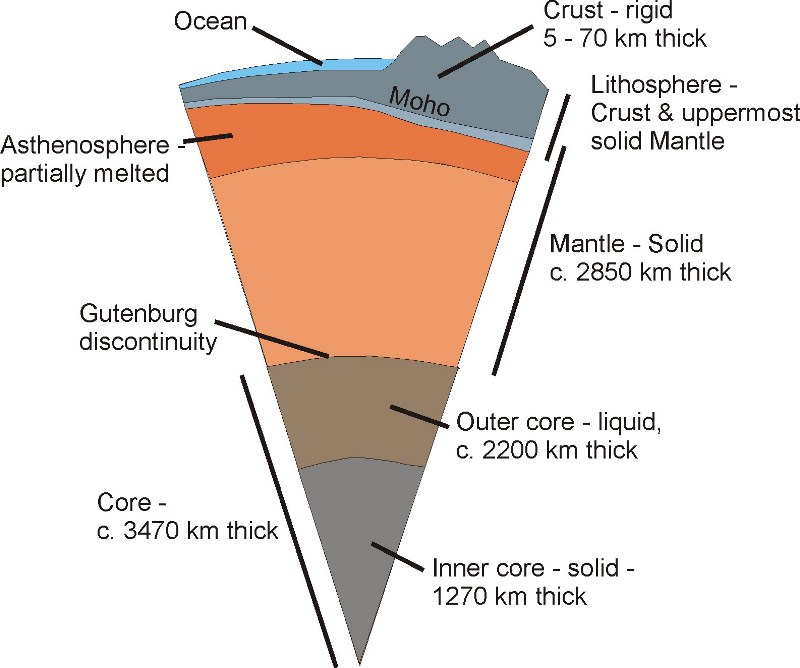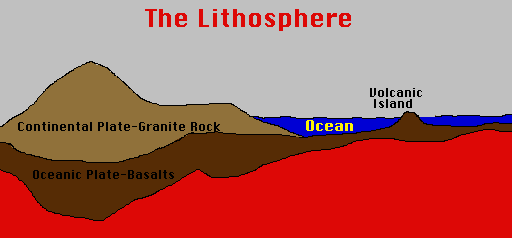The portion of the earth s crust that primarily contains granite is less dense than oceanic crust and is twenty to fifty kilometers thick plate tectonics a process involving the movement of large plates on the earth s mantle.
The portion of the earth s crust that primarily contains granite.
In relative terms it s thickness is like that of the skin of an apple.
The portion of the earth s crust that primarily contains basalt and is denser than continental crust.
Earth s layers constantly interact with each other and the crust and upper portion of the mantle are part of a single geologic unit called the lithosphere the lithosphere s depth varies and the mohorovicic discontinuity the moho the boundary between the mantle and crust does not exist at a uniform depth.
The earth s crust is an extremely thin layer of rock that makes up the outermost solid shell of our planet.
The crust of earth is of two distinct types.
Thicker portion of the earth s crust that primarily contains granite is less dense than oceanic crust and is 20 50 km thick core hot metallic center of the earth.
It amounts to less than half of 1 percent of the planet s total mass but plays a vital role in most of earth s natural cycles.
Granite coarse or medium grained intrusive igneous rock that is rich in quartz and feldspar.
Because both continental and oceanic crust are less dense than the mantle below both types of.
The portion of the earth s crust that primarily contains granite is less dense than oceanic crust and is 20 50 km thick.
The portion of the earth s crust that primarily contains granite is less dense than oceanic crust and is 20 50 km thick.
The portion of the earth s crust that primarily contains granite is less dense than oceanic crust and is 20 50 km thick.
It is the most common plutonic rock of the earth s crust forming by the cooling of magma silicate melt at depth.
30 km 20 mi to 50 km 30 mi thick and mostly composed of less dense more felsic rocks such as granite.
What is the crust made of.
The answer to this question depends on whether we want to know which chemical elements minerals or rock types it is made of.
Isostasy describes the physical chemical and mechanical differences between.
It may be surprising but about a dozen chemical elements minerals or rock types is all that it takes to describe approximately 99 of the crust.
5 km 3 mi to 10 km 6 mi thick and composed primarily of denser more mafic rocks such as basalt diabase and gabbro.
The portion of earth s crust that primarily contains basalt is relatively dense and is 5 20km thick.










